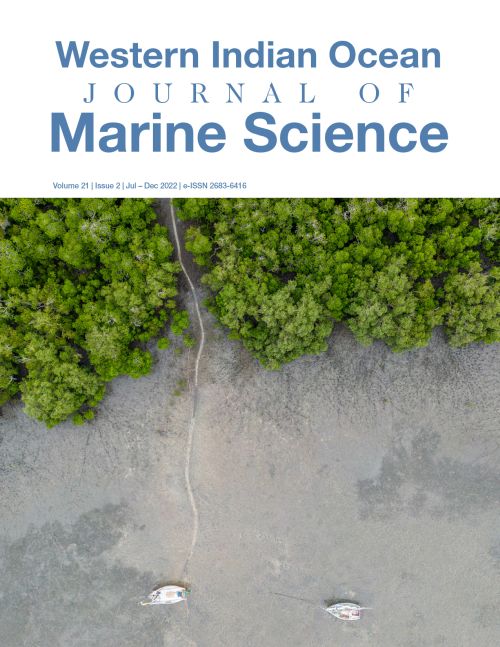Main Article Content
Comparative assessment of the impacts of artisanal trolling and industrial longlining on yellowfin tuna exploited off the Kenyan coast
Abstract
The Indian Ocean yellowfin tuna stock has been classified as overfished and remains subject to overfishing by industrial and artisanal fleets despite the implementation of catch reduction measures to rebuild the stocks. This study assessed the impacts of artisanal trolling and industrial pelagic longlining on the population structure of yellowfin tuna exploited in Kenyan waters. Catch data including fork length, sex and gonad maturity was examined for the two fisheries between April 2019 and April 2021. Selection patterns were then compared using eight length-based indicators and a suite of indicator ratios. Results showed that artisanal trolling caught smaller individuals ranging from 32−177 cm with a mean of 76 ± 0.5 cm and a mode of 71 cm. The industrial fishery caught significantly larger individuals (p > 0.05) ranging from 52 – 204 cm with a mean of 137 ± 0.7 cm and a mode of 160 cm. Length at first capture (Lc) for artisanal trolling was estimated at 36 cm and 80 cm for the industrial fishery. Statistical tests further revealed significant differences in length distribution and selectivity curves. It was clear that the fisheries consistently captured distinct components of the yellowfin tuna population structure. The industrial fishery was dominated by mature individuals above length at 50 % maturity (>100 cm, L50) constituting 90 % of the sampled catch of which 56 % were large mega-spawners above the optimum length (> Lopt + 10%). On the other hand, 92 % the artisanal trolling fishery constituted small individuals below L50 and no mega-spawners. Overall, the average monthly sex ratio was skewed to males (F:M ratio = 1: 1.14). Deviations from the expected 1:1 sex-ratio were not significant; however, industrial longline catches were skewed towards large males, and artisanal trolling catches towards small females. The study illustrates application of widely used lengthbased approaches to derive insights on fishery interactions in data limited scenarios.






